Explore Francistown - Botswana Travel, Africa
Nestled in the northeastern corner of Botswana, Francistown is a vibrant blend of history, culture, and adventure. As one of the country’s oldest towns, it has transformed from a mining outpost into a modern city that still retains its old-world charm. From its rich Kalanga cultural heritage to its warm, welcoming locals, Francistown is a destination that tells a story at every turn. Its streets are dotted with both colonial landmarks and modern attractions, giving visitors a true sense of Botswana’s evolving identity. Ready to explore? Let Francistown's unique history and culture guide you through your next adventure.
Population: Approximately 100,000 in 2022.
Economy: Francistown's economy thrives on mining, particularly gold and copper, along with agriculture and trade. This city is a key commercial hub in northern Botswana, attracting investment and supporting regional growth.
Landmarks: Famous for the Supa Ngwao Museum, Tachila Nature Reserve, and Domboshaba Ruins.
Botswana
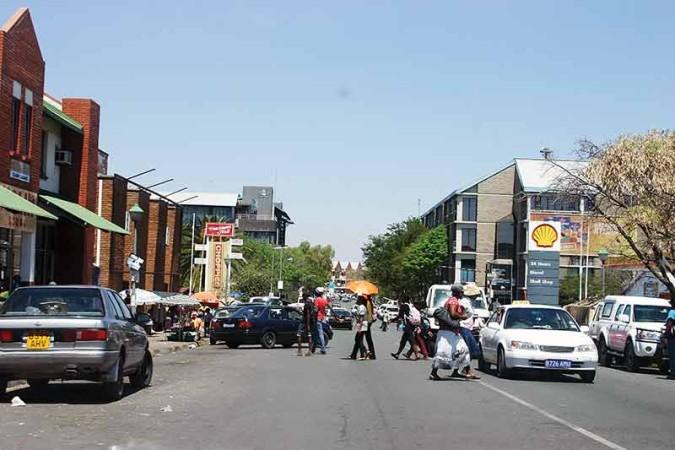
Overview of Francistown
History & Cultural Influence
Francistown’s roots trace back to the late 19th century when gold was discovered in the Tati River region. As one of Botswana's earliest gold rush towns, Francistown quickly became a focal point for prospectors from all over the world. Yet, Francistown’s identity is not just built on gold. It is also a significant hub for the Kalanga people, one of Botswana's largest ethnic groups. This rich blend of cultures makes Francistown an exciting destination for those who want to explore Botswana’s diverse heritage. Visitors can gain insight into the Kalanga culture by visiting local museums or attending cultural festivals held throughout the year.
Interaction with The Locals
Francistown has a population of around 100,000 people, making it one of Botswana's largest urban areas. The majority of its citizens are Batswana, with a significant presence of the Kalanga ethnic group, reflecting the town's rich cultural heritage. The locals are known for their friendliness and hospitality, often welcoming visitors with open arms. Setswana and Kalanga are widely spoken, although English is commonly used for business and tourism, making it easy for travelers to communicate.
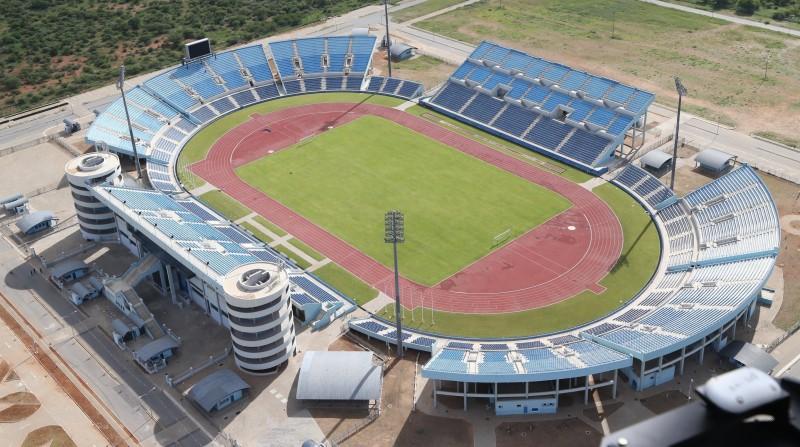
Francistown Stadium - © Wikipedia
Top Attractions in Francistown
Francistown offers a wide array of attractions, from cultural landmarks to natural reserves. Each of these attractions offers something unique, giving you a well-rounded experience of Francistown’s culture, history, and natural beauty.
Supa Ngwao Museum
The Supa Ngwao Museum is one of Francistown's most popular attractions, offering a detailed look at the town's rich history and Kalanga cultural heritage. Its exhibits include traditional crafts, historical artifacts, and displays on the town's past as a gold mining hub. It’s the perfect place to start your journey in Francistown and gain a deeper understanding of its roots.
Tachila Nature Reserve
Located just outside the city, the Tachila Nature Reserve is a haven for nature lovers and wildlife enthusiasts. TThe reserve is home to a variety of animals, including warthogs, antelopes, and an astounding number of birds. Visitors can enjoy guided nature walks, wildlife tours, and breathtaking views of Botswana’s untouched landscape. If you want to get away from the rush and bustle of the city, this is a must-see destination.
Domboshaba Ruins
For history buffs, the Domboshaba Ruins are a fascinating glimpse into Botswana’s ancient past. These stone remnants, located north of Francistown, are thought to be part of the Great Zimbabwe civilization. The site offers a unique opportunity to explore ancient architecture and learn about the early inhabitants of the region.
Nyangabgwe Hill
If you’re in the mood for a scenic hike, head to Nyangabgwe Hill. This local landmark provides panoramic views of Francistown and the surrounding areas. It’s a peaceful spot to relax, take photos, and enjoy the natural beauty of the region, especially at sunset when the landscape is bathed in warm colors.
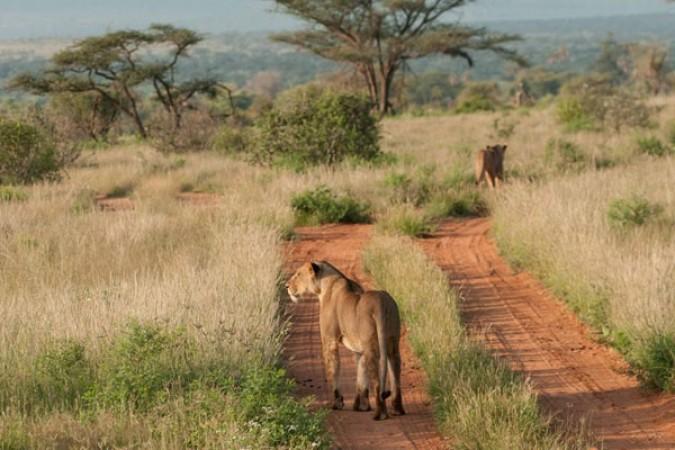
Tachila Nature Reserve - © The Botswana Society
Must-Try Dishes in Francistown
From traditional slow-cooked stews to quick street bites, Francistown’s local dishes offer a deep connection to Botswana's culinary heritage and are a must-try for any traveler looking to experience the region’s unique flavors.
- Seswaa: A national favorite, Seswaa is Botswana's signature dish. It consists of beef, goat, or lamb slow-cooked until tender, then pounded and served with pap (maize porridge) and morogo (wild spinach). The simplicity of the dish reflects the traditional cooking style of Batswana.
- Dikgobe: Dikgobe is a wholesome dish made from samp (crushed maize) and beans. It’s a hearty and nutritious meal, often enjoyed during celebrations and family gatherings. It pairs well with grilled meats or can be eaten on its own.
- Bogobe jwa Lerotse: This distinctive dish is composed with maize flour porridge and lerotse (a sweet melon). The melon gives the dish a mild sweetness, making it a comforting and distinctive meal. It’s popular in rural areas and enjoyed for its simplicity and nutritional value.
- Vetkoek: Vetkoek is a popular street food in Francistown. This deep-fried dough is crispy on the outside and soft on the inside, often stuffed with minced meat or served plain with jam. It’s perfect for a quick snack or light meal on the go.
- Matemekwane: A traditional dumpling made from bread dough, Matemekwane is typically filled with savory ingredients like spiced minced meat or vegetables. It’s boiled and served alongside stews or meat dishes, making it a hearty and flavorful addition to any meal.
- Mogodu: A traditional delicacy, Mogodu is made from tripe (cow’s stomach), slow-cooked until tender and seasoned with herbs and spices. Though an acquired taste, it’s a beloved dish among locals and offers a true taste of Francistown’s traditional fare.

Dikgobe - © Issuu
Festivals & Local Celebrations
Francistown is a cultural hub where traditions, music, and dance come to life during its vibrant festivals. These events offer a perfect opportunity for travelers to immerse themselves in the town’s rich heritage and local customs.
Domboshaba Cultural Festival
The Domboshaba Cultural Festival is one of Francistown’s most significant events, celebrating the Kalanga culture and its heritage. Held annually near the ancient Domboshaba Ruins, this multi-day festival is a colorful showcase of traditional Kalanga music, dance, crafts, and food. Visitors can enjoy live performances of Kalanga folk songs and dances while sampling authentic dishes. The festival also features storytelling sessions, workshops on local crafts, and traditional attire displays, making it a great way to learn about the indigenous culture.
Francistown International Carnival
A relatively new but increasingly popular event, the Francistown International Carnival brings together various cultures, both local and international, in a festive celebration of diversity. The carnival features lively street parades with floats, dancers in vibrant costumes, and music performances ranging from traditional African beats to contemporary tunes. The carnival promotes unity and cross-cultural exchange, allowing visitors to experience a mix of Botswana’s modern and traditional identities. Alongside the parades, there are art exhibitions, food stalls, and entertainment for the whole family.
Botswana Independence Day (Boipuso)
Celebrated nationwide on September 30th, Botswana Independence Day, or Boipuso, marks the country’s independence from Britain in 1966. In Francistown, the day is filled with festivities, including parades, flag-raising ceremonies, concerts, and speeches. The city’s streets are filled with revelers dressed in the national colors of blue, black, and white, symbolizing pride and unity. Traditional dance performances, music, and storytelling feature prominently, with locals and visitors joining together to celebrate Botswana’s national identity. This day provides a unique opportunity to witness the patriotic spirit of Botswana.
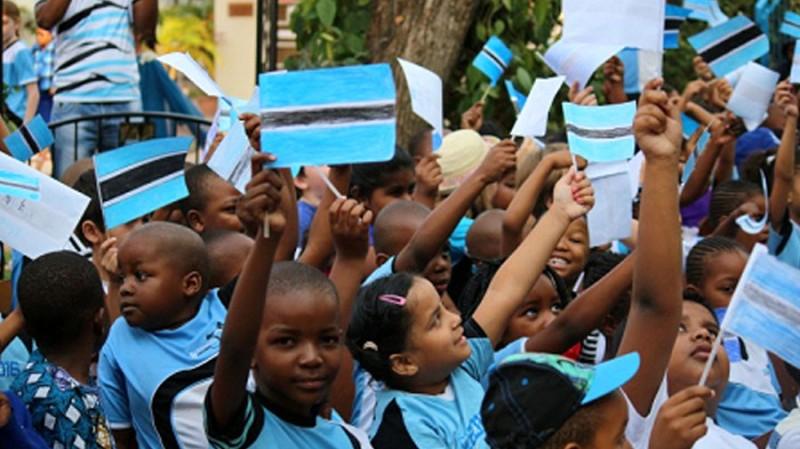
Botswana Independence Day - © The Diplomatist
What to Do in Francistown
- Wildlife Safaris: Francistown is ideally located for wildlife enthusiasts. Nearby game reserves like Tachila Nature Reserve offer guided safaris where visitors can spot antelope, warthogs, and a variety of bird species. For a more immersive experience, consider joining a multi-day tour that explores Botswana's broader wildlife reserves.
- Cultural Tours: For those interested in learning more about local traditions, cultural tours of Francistown and the surrounding villages offer insight into the daily life of the Kalanga people. These tours often include visits to Kalanga homesteads, traditional music performances, and local craft demonstrations.
- Mining History Exploration: Take a guided tour through the historic Tati Goldfields, where you can learn about Francistown’s gold mining past. These tours offer a fascinating look at the role gold played in the town’s development and include visits to old mining sites.
- Hiking at Nyangabgwe Hill: For active travelers, a hike to the top of Nyangabgwe Hill is a must. The hill offers panoramic views of Francistown and is a great spot to unwind while taking in the natural beauty of the area.
Shopping in Francistown
- Tati River Mall: For a more modern shopping experience, the Tati River Mall features a wide range of stores, from local boutiques to international brands. It’s the perfect place to pick up essentials or treat yourself to a little luxury during your stay.
- Blue Jacket Street Market: If you’re looking for authentic, locally made goods, head to the Blue Jacket Street Market. This bustling marketplace is a hub of activity, offering everything from traditional crafts and handmade jewelry to fresh produce. Bargaining is part of the experience, so don’t hesitate to negotiate for a better price!
- Francistown Craft Market: For unique souvenirs, the Francistown Craft Market is the place to go. Here, you’ll find artisans selling Kalanga art, beadwork, pottery, and woven baskets. It’s the ideal spot to pick up something special to remind you of your trip to Botswana.
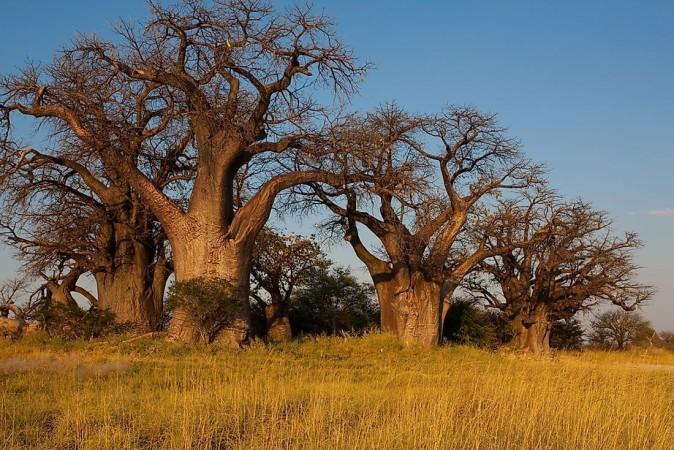
Wildlife Safaris in Tachila Nature Reserve - © World Atlas
Weather in Francistown: Best Time to Visit
Francistown experiences a semi-arid climate, typical of Botswana, with distinct seasons that travelers should consider when planning their visit.
Dry Season in Francistown
The dry season months bring hot and wet conditions to Francistown with temperatures during this time can climb between 30°C and 40°C (86°F to 104°F). The region also experiences frequent thunderstorms, with December to February being the peak rainy season. These afternoon downpours might be strong, although they are usually fleeting. While the landscapes turn lush and green, making it visually stunning, travelers should pack lightweight clothing, sun protection, and an umbrella or rain jacket.
Wet Season in Francistown
Wet season in Francistown is typically dry and cooler, with temperatures ranging between 5°C and 25°C (41°F to 77°F). The mornings and evenings can get particularly chilly, but daytime temperatures remain pleasant for outdoor activities. June and July are the coldest months, with the occasional frost in the early hours. Travelers visiting during this period should pack layers to stay comfortable as temperatures fluctuate.
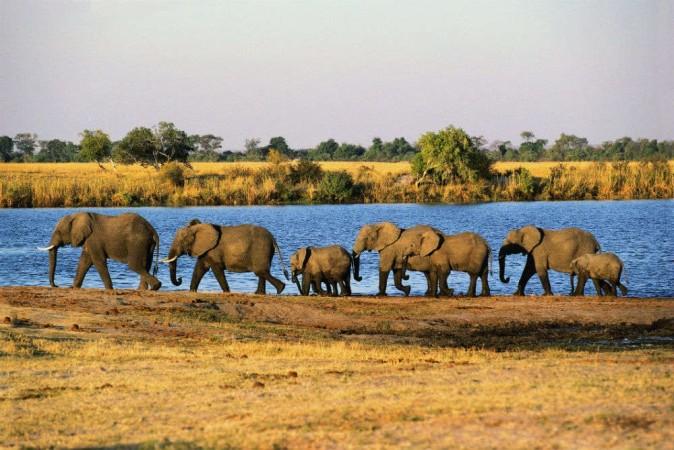
Wildlife observing in Tachila Nature Reserve - © Times of India
Essential Travel Information
Getting Around Francistown
- Taxis: Taxis are the most popular and convenient mode of transport within the city. They are easily available and affordable, with both shared and private taxis operating throughout Francistown.
- Car Rentals: For those looking for more freedom and flexibility, car rentals are available in Francistown. Major rental agencies have a presence in the city, and driving is on the left-hand side of the road.
- Buses and Minibuses: Buses and minibuses connect Francistown to other major cities in Botswana as well as neighboring countries like Zimbabwe. Within the town, minibuses run regular routes, providing an affordable way to travel between neighborhoods and attractions.
ATM & Banking Services
Francistown offers comprehensive banking and ATM services to meet travelers' needs. Several banks operate throughout the city, providing various financial services such as foreign exchange and general banking. ATMs are widely available in key locations, including shopping areas and main streets, and accept international debit and credit cards. To avoid any card transaction complications, tell your bank before flying. While ATMs generally offer convenience, carrying some cash is recommended for smaller purchases and transactions in less urban areas.
Where to Stay in Francistown
- Luxury Hotels: For those seeking premium comfort and services, Francistown features several luxury hotels. Guests can expect spacious, well-appointed rooms and a high standard of hospitality, making them ideal for a more indulgent stay.
- Mid-Range Hotels: Travelers looking for a balance of comfort and value can choose from a range of mid-range lodges or guesthouses. They provide a good mix of affordability and comfort, making them a popular choice for many visitors.
- Budget Lodgings: For those on a tighter budget, Francistown has a selection of budget accommodations including hostels and guesthouses. These options provide essential amenities at lower costs and are great for travelers looking to save money.
Articles for you

Explore Yala National Park - Sri Lanka Travel, Asia
Tucked away in Sri Lanka’s southeastern corner, Yala National Park is where wild nature meets deep tradition. Known worldwide for its leopard population, the park is also home to elephants, sloth bears, crocodiles, and hundreds of bird species. Beyond wildlife, Yala opens doors to a cultural landscape dotted with ancient temples, Buddhist ruins, and coastal villages. For travelers seeking more than just a safari, Yala offers a chance to explore eco-tourism, local communities, and sacred heritage sites.
Population: The Yala National Park area doesn’t have a human population.
Economy: The economy around Yala National Park thrives on a blend of eco-tourism, agriculture, and local services. Safari tours, eco-lodges, and cultural experiences drive steady income for nearby towns like Tissamaharama and Kataragama, supporting thousands of families.
Landmarks: Famous for Block I of Yala and wildlife encounters, including elephants, sloth bears, crocodiles, and exotic bird species.

Explore Galle - Sri Lanka Travel, Asia
Nestled on Sri Lanka’s southern coastline, Galle is a vibrant city where history meets the sea. Its cobbled streets, colonial architecture, and serene beaches make it a must-visit destination for travelers seeking a blend of culture, adventure, and relaxation. A UNESCO World Heritage site, Galle captivates visitors with its Dutch Fort, bustling markets, and friendly locals. Whether you’re exploring the ramparts at sunset or savoring fresh seafood by the shore, Galle promises an unforgettable journey into Sri Lanka’s heritage.
Population: Approximately 113,000 in 2023.
Economy: Galle’s economy thrives on tourism, trade, and fisheries. The city’s historic fort, colonial architecture, and coastal charm draw thousands of international visitors each year, making tourism its main economic driver. Fishing remains vital for local livelihoods, supplying fresh seafood across the region.
Landmarks: Famous for the Galle Fort, Dutch Reformed Church & Maritime Museum, and Unawatuna Beach.

Explore Bentota - Sri Lanka Travel, Asia
Nestled along Sri Lanka’s southwestern coast, Bentota is a tropical paradise that blends golden beaches, vibrant culture, and thrilling adventures. Famous for its calm waters, luxury resorts, and scenic river estuary, Bentota has become a top destination for travelers seeking both relaxation and authentic experiences. From serene beach walks at sunrise to adrenaline-pumping water sports, this coastal town offers a perfect balance of leisure and exploration. With its proximity to Colombo and Galle, Bentota is easy to reach, making it an ideal stop for both short escapes and extended holidays.
Population: Approximately 37,000 in 2023.
Economy: Bentota’s economy thrives mainly on tourism, which drives local businesses such as hotels, restaurants, and wellness retreats. The town also benefits from fishing, coconut cultivation, and handicrafts like wood carving and batik textiles. Many residents rely on the growing demand for water sports and Ayurvedic treatments, making tourism the backbone of both income and employment in the area.
Landmarks: Famous for Bentota Beach, Bentota River Safari, and Kande Vihara Temple.

Explore Mirissa - Sri Lanka Travel, Asia
Mirissa is a charming coastal town on Sri Lanka’s southern shoreline. Known for its golden beaches, turquoise waters, and vibrant marine life, it has become a must-visit stop for travelers exploring the island. Many come for whale watching, surfing, and sunset views at Coconut Tree Hill, but Mirissa offers much more than postcard beauty. The fishing boats you see anchored by the bay carry generations of stories. Local traditions, delicious cuisine, and a laid-back rhythm of life shape every visitor’s experience.
Population: Approximately 4,700 in 2023.
Economy: Mirissa’s economy is largely shaped by its coastal location. Fishing has long been the backbone of local livelihoods, with generations relying on the Indian Ocean for income. In recent decades, tourism has become the main driver of growth, thanks to whale watching, surfing, and beachside hospitality.
Landmarks: Famous for Mirissa Beach, Coconut Tree Hill, and Parrot Rock Bridge.

Explore Nuwara Eliya - Sri Lanka Travel, Asia
Tucked away in the Central Highlands of Sri Lanka, Nuwara Eliya is often called “Little England”. With its rolling tea plantations, cool misty mornings, and colonial charm, this mountain town feels like a step into another world. Travelers come here to breathe fresh air, walk through flower gardens, sip the finest Ceylon Tea, and enjoy a pace of life far from the island’s busy cities. Whether you’re drawn by scenic landscapes, heritage architecture, or the warmth of its people, Nuwara Eliya is a destination that blends nature, culture, and history in perfect harmony.
Population: Approximately 781,000 in 2023.
Economy: Nuwara Eliya’s economy thrives mainly on tea production, as it sits in the heart of Sri Lanka’s central highlands, famous worldwide for Ceylon Tea. The city also benefits from a growing tourism industry, attracting visitors with its colonial charm, cool climate, and scenic landscapes.
Landmarks: Famous for Gregory Lake, Hakgala Botanical Garden, and Victoria Park.

Explore Sukau - Malaysia Travel, Asia
Nestled on the banks of the Kinabatangan River in Sabah, Malaysian Borneo, Sukau is a destination where wildlife, culture, and conservation come together. Known as one of Asia’s top spots for river safaris and eco-tourism, this quiet village offers a front-row seat to encounters with Bornean orangutans, pygmy elephants, proboscis monkeys, and exotic birdlife.
Population: Approximately 1,400 in 2019.
Economy: Sukau’s economy is shaped by its riverine location and natural resources. Traditionally, the Orang Sungai community relied on fishing, small-scale farming, and forest gathering for their livelihood. Today, the village has shifted toward eco-tourism, with river cruises, jungle trekking, and homestays providing income.
Landmarks: Famous for the Kinabatangan River cruises, Gomantong Caves, and Ox-bow lakes and wetlands.
